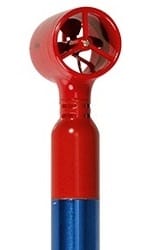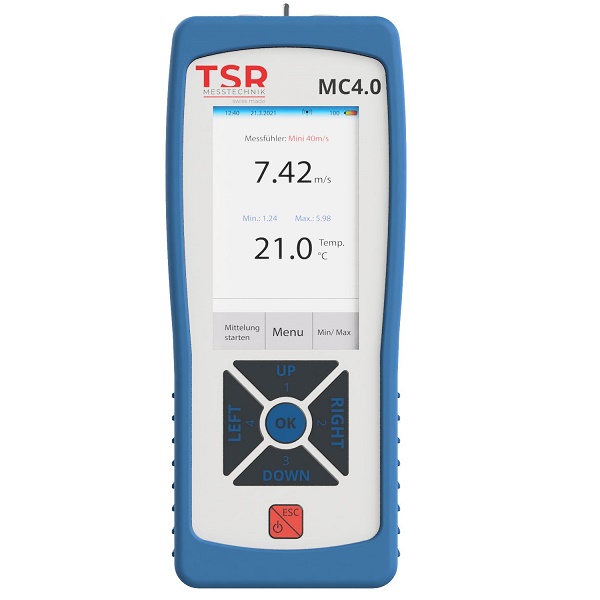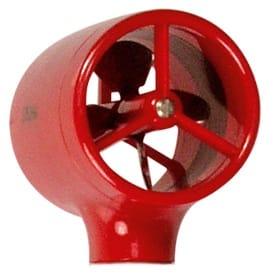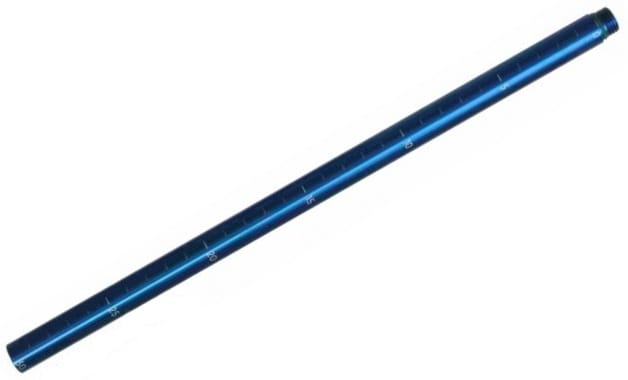Description
The MIWA2022 is a turbine flow sensor that connects to the MC20 handheld display to provide flow readings for surface water flows in rivers, canals, or any other open channel water courses. The probe head is a synthetic plastic construction with a metal turbine that generates a frequency output each time one of the four turbine blades pass the probe handle. The frequency of rotation is proportional to the flow velocity. The MC20 converts the rotational frequency into a standard signal and shows the measured value in the display.
The MIWA2022 includes the Mini snaphead, which is only 22mm in diameter, has a flow range of 0-10m/s. This head is slightly larger than the probe handle, but may still be inserted into pipework using a compression gland and only requires a minimum access diameter of 35mm. The Mini head is ideal for measuring flow rates in rivers, lakes and channels.
Specifications
| Air Probe: | MiniWater 6 Mini |
| Range: | 0.03 – 10 m/s |
| Accuracy: | ±2.0% full scale ±3.5% reading |
| Operating Temp: | Up to +70°C |
| Head Dimensions: | ø 22 x 28 mm |
| Access Opening: | 35mm |
| Snaphead Material: | Synthetic Plastic |
| Vane Material: | Aluminium |
| Probe Length: | 175mm |
| Cable Length: | 1.8m Cable |
Cleaning Instructions – MiniWater 20 Mini Plastic Probe
As the probes are highly sensitive measuring instruments, they must be cleaned with very great care.
Any fibres, weeds or other foreign bodies should be carefully removed with fine tweezers. When doing so, take care not to bend or otherwise damage the vanes or the spindle.
The adjustment of the bearing screws must never be changed. This can result in erroneous measurements.
Never allow hard objects to contact rotating impellers!!!
Cleaning agents which extract the plasticizer from the plastic are never to be used for plastic probes (practically all solvents!).
We recommend the following for cleaning the probes:
– clean running water
– soapy water
– pure benzine
Cleaning example:
1) Carefully swish the top part of the impeller back and forth in clean, pure benzine for about 10 min. Then swish the top part of the impeller back and forth in clean kerosene for about. 1 min. to re-lubricate the impeller bearings.
If soapy water is used as a cleaning agent it is advisable to wash out the soap solution thoroughly with distilled water before lubrication with kerosene.
2) After cleaning the probe, rub it dry externally with a clean, dry, fluff-free cloth.
3) Leave the top part of the impeller to dry for about 30 minutes.
Only clean the head of the impeller! Probes are on no account to be fully immersed in the solution.
Snap-Head Replacement
The snap-head fixing system renders it very simple to fit a new impeller to the flow probe: this saves costly non-productive time and in the event of damage to the snap-head enables you to have the probe back in service in a matter of seconds by simply changing the snap-head.
Every MiniWater probes generate a pulse each time a vane blade passes the probe handle and the MC20 converts the output to a flow velocity to display on the MC20. Each snap head is automatically detected by the MC20 display and in different probes can be selected in the main menu. Selecting the incorrect probe will not match the internal calculations in the MC20 and will lead to inaccurate readings on the display.
MIWA2022 is the replacement part for part no. 95.0013.






